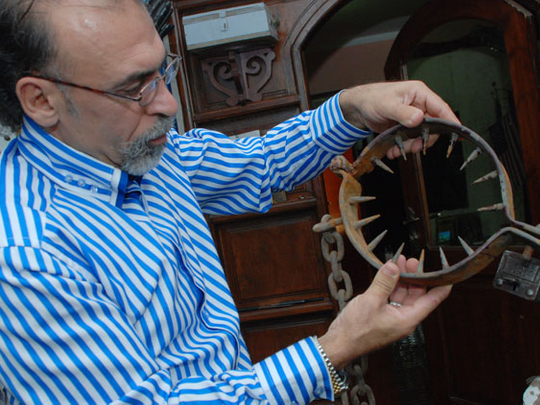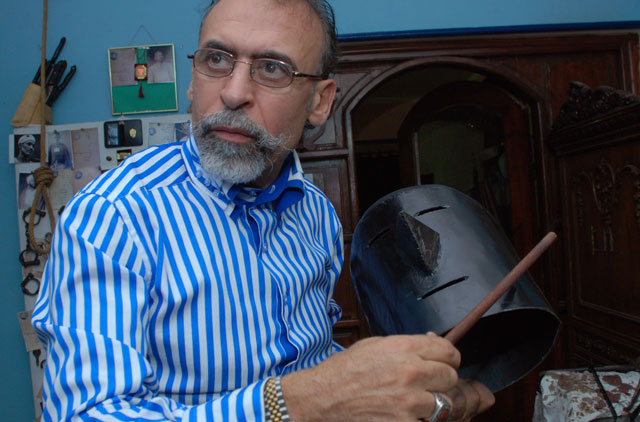
Cairo: Egypt will soon host a first of its kind torture museum, exhibiting various tools used to harm and intimidate people around the world, in a bid to expose history's oppressors.
Egyptian reasercher Mohammad Abdul Wahab told Gulf News that he hoped that his museum would deter woul-be oppressors from resorting to torture.
To Abdul Wahab, human history is teeming with examples of horrifying oppression inflicted mostly on dissident intellectuals and politicians. In his view, one of the best ways to deter would-be oppressors is to expose those of the past.
Therefore, Abdul Wahab, who lived for years in the US, has spent almost a decade collecting tools of torture from different eras and countries. Now they are displayed in his gallery at Al Maryutia near the famous Giza Pyramids.
At present only members of the media and human rights advocates have been allowed to tour the gallery. But Abdul Wahab promised he would open it to the public in the near future.
"My gallery shows the extent of injustice done to humans throughout history," Abdul Wahab said. "Like men, women have been the target of torture," he told Gulf News.
To demonstrate his point, he pointed to a pair of scissors used to mutilate the breasts of dissidents.
Not an easy journey
Abdul Wahab, 49, said his journey to collect the grim legacy had not been easy. He had toured museums around the world and scoured history books to find information about instruments that had been used in torture, but no longer existed. Then he had copies made for display in the museum, which now houses at least 1,000 such instruments of terror. Today, his gallery of horror features instruments of torture from Europe, the Middle East, Russia and Egypt. "One of the most notorious torture tools in the Middle Ages was ‘the blender' — an iron instrument similar to the coffee beans mixer into which the tortured person is put and then the tormentor would gradually move until the head is crushed," he said.
Abdul Wahab said an infamous tool of torture in Egypt's Mamluke era (1250-1517) was called Al khzuq, a long piece of wood topped by sharp blades. "The victim would be pressed on this tool so that its sharp pieces would gradually cut into his body," he said.
Another instrument of cruelty, the blower, was invented and used in the Medieval Ages. It was inserted into the prisoner's bottom after which the tormentor would blow it up until the prisoner's body burst from the pressure.
"Some secret services still use this tool," he said. Abdul Wahab said he hoped to arrange his museum of torture to resemble a kind of house of horror with sections that would virtually transport visitors back to the times when the tools on show were made and used. Victims' groans and cries would also be simulated to intensify the experience, he said.
Abdul Wahab said he hoped his gallery would become the world's first and largest of its kind. "I will not be lax in exposing the world's sadists for humiliating man, who is God's noblest and most dignified creature," he said.















